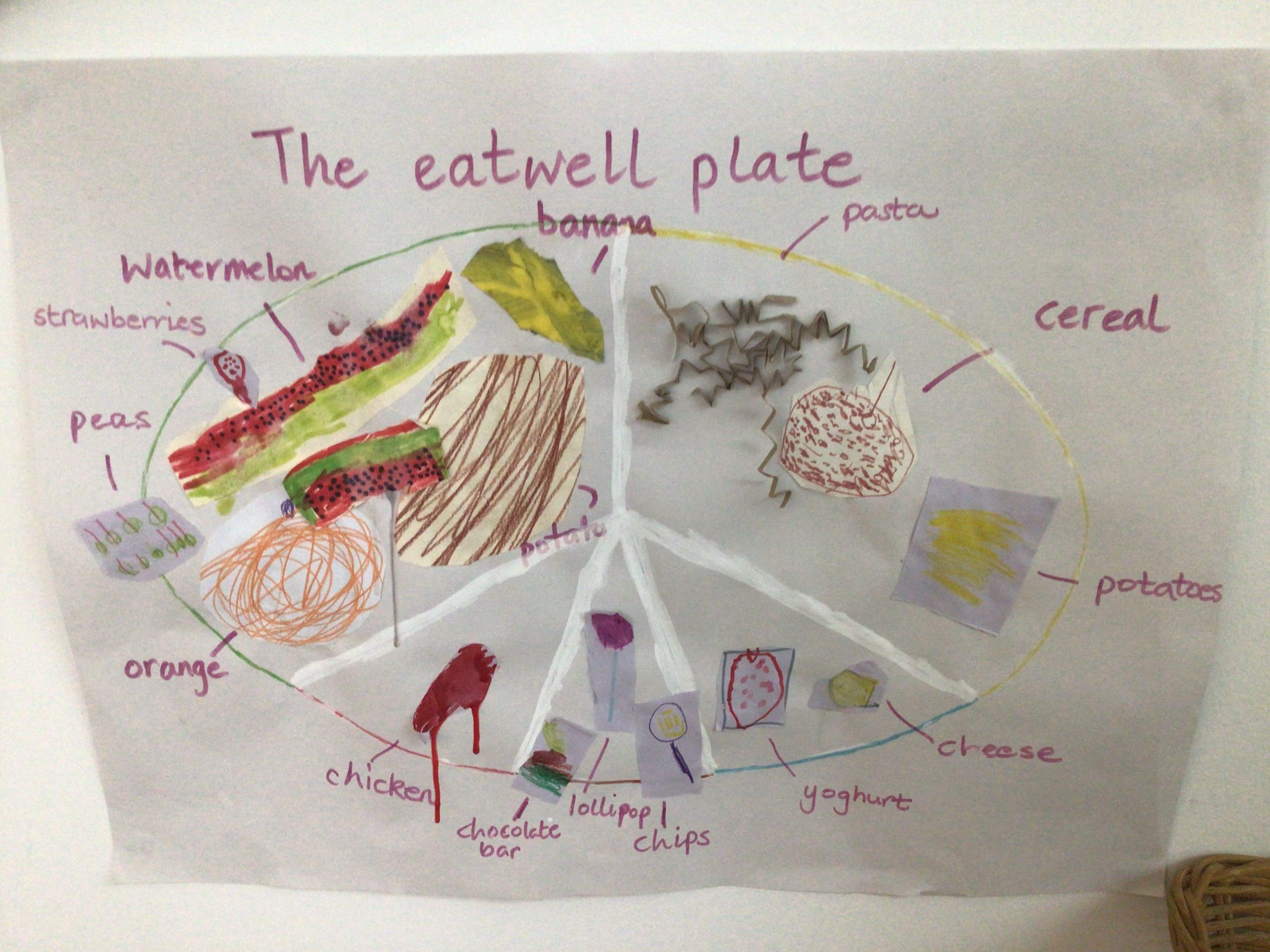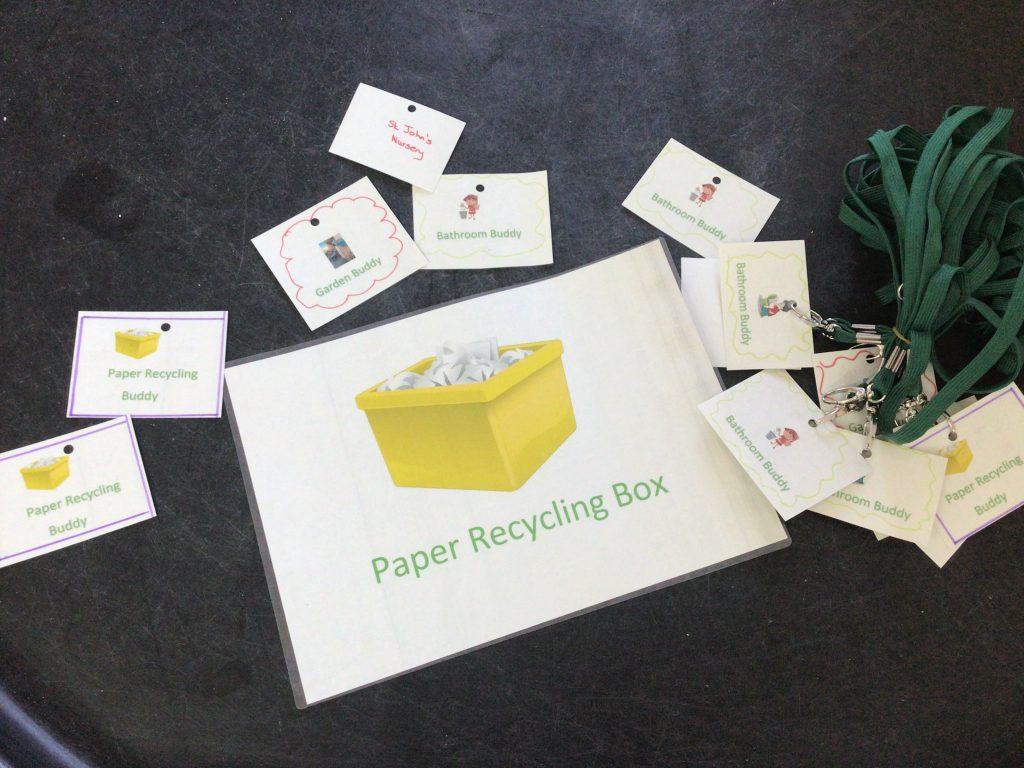Case Studies
St Johns Nursery
This case study is in interview format. St Johns Nursery Staff Leenan McClure and Pamela Dunn (with notes from Leanne Miller) chatted with Jo Sharp from Childrens Parliament.
Responsive Planning
(L)- Leenan
(P)- Pamela
(J)- Jo
L: We have got responsive planning, so the children have got a voice in what they are doing at Nursery. This is especially effective for children who don’t have any language. It’s a way of observing them and what they like to do and planning activities around this.
P: It takes into consideration not just what children tell us but what they draw, what they are interested in…
J: For anyone who doesn’t know what does responsive planning mean?
P: It’s a bit more of a fluid plan for the day. It can be on the spot.
L: For example a little girl was playing a game of colours and we noticed – oh she’s very into that – so we adapted it today and put out some different paints today so she could start mixing the colours – it’s a way of extending their learning.
P: So it could be immediate, or it could be something we plan to do it in the next day or two. It has got to be fairly relevant because they’re young… in a weeks time it might not be relevant, so we try to respond immediately.
L: and I know next door (in the Starfish room for children aged 2) there’s a boy whos been talking about the farm quite a lot so we’re taking that on as a response as well, all the farm animals, and the staff will make a theme of it so they’ll try to encourage all the other children to join in.
J: That’s a great way for the children to know that the adults around them are interested in them, they notice what it is they like doing.
P: Yeah, and if it doesn’t work out, okay, well just do the next thing.
L: This is an ongoing thing.
J: It’s more of an ethos throughout?
L: Yeah exactly. Sometimes on our wall we might have six or we might have one…
P: It might last a day it might last a week or grow arms and legs, it depends if other children get interested in that too
J: So when you say on the wall, is that like putting up activities on the wall like ‘we could do this’ or ‘we could do this’?
L: It’s just taking the observation or something the child has said and putting that up because then the team remember what they’ve asked for or what they’ve done. We’ve got big books too where we can take photos or notes of what they’ve done and put it in their journal and carry on from there to reflect on their learning, the children can also go back and remember what it is they’ve done.
P: It used to be called the floor book but now it’s called the big book or their big learning book because it is their learning, they get to look at it, they get to put the pictures in, they get to scribe if they want or we’ll scribe for them – it’s the childrens way of looking back on their learning.
L: It’s a good way of communicating with the children. You can sit with them at the big book and point out things and say ‘ what did you do there?’. Or at the same time It’s something to come back to for them to say ‘oh! I want to do that again’ pointing out something in the book. There was one we had sone last week and they were just playing with the playdough and they asked if they could make real cakes, but we couldn’t make real cakes, so what I did was got each of them to make their own little bit of play dough and we noticed it was sticky so we said ‘what else is sticky?’ and it got into them – “jelly!” and they started doing some jelly play, so its just little things like that.
J: yeah, kind of following that thread…
L: yeah, following it through.
J: Through doing this responsive planning as a team in the Nursery has there been any learning for staff as a result of that? Or any challenges you have come across as a team?
P: From my point of view… when we were in lockdown I went to working in the 2’s room and now I’m back in the 2’s room it’s nice to see how different age stages work and its learning as you go along for all the staff as well … see what works and see what maybe you can take from that situation and or development stage and even implement it into another one … I’ve found that helpful anyway … but we all do come together with ideas to try and make it happen and resource it.
L: but it may not work that way always because the kids may have a very firm idea of what they would like to do. Or we might support them and say for example if we notice someone is interested in volcanos we can say ‘Should we make one together? How are we going to make one? What would we need?’.
P: So its giving them.. first of all their idea and their voice is heard but then supplying them with the tools and resources to make that happen.
L: and we have our team planning meetings as well so if it’s not something we can do straight away we’ll take the child’s voice from there, we’ll sit together in the meeting and figure out how we can get this resourced for them.
P: I think we learn from each other. We listen, the adults, to each others voices as well which is really important.
J: That sounds really great especially those opportunities to come together as a team and share ideas – ‘right – we’ve got on the board that Samantha loves the colour purple, what can we do with purple?’.
P: Yeah we’re all very individual and that’s the whole point isn’t it – children are, adults are, we all are.
Smaller Story Groups
L: We’ve been drawing in our story groups and having smaller story groups with some of the rooms (with different aged children) together. So the Seahorse room (age 3-age 5) they used to have one big story time.
P: with 40 children.
L: So, when they all had one big story time they were not really able to all have their voice, not everyone got to put their hand up and say something or point out things on the page.
P: There’s so many different types of learners in the group and they’re at different stages.
L: So, we have reduced it down and a group comes out and they’ll do a story together. So the stories usually the childrens’ choice as well.
P: We try and ask them what they would like to read and there’s books out so they get to choose from a wide range. We try to theme these to what they would like or what’s going on in the nursery as well
J: I remember visiting in December and you had all the fabulous winter and Christmas books out! Do you find that having smaller groups helps with that response and engagement?
P: yeah, one is that you can let them vote. If there are a couple of popular books you can ask the children which one they want to read and they can see how their choice as a group will decide what one we actually read.
L: …and you’ve got the individual children who don’t speak out in the bigger group and won’t want to raise their hand infront of everyone but will be part of discussion in a smaller group.
P: They will be heard in a quieter environment in a way that’s hard for them in a bigger group.
L: and what we have done with that as well is in our starfish room (2 year olds) they then get a choice ‘Would you like to go and join the story group?’ so a couple of our children…
P: There’s quite a few, about four to six?
L: Yeah, I think yesterday we did have six that chose to go and join the big room for story time.
P: so that’s peer support – that’s lovely to see! They learn from the older ones how to sit and listen a bit better… and they we’re great today I was asking questions and I could see they we’re concentrating and enjoying being part of it.
L: and in the 2 year olds room we don’t usually have a big ‘let’s all sit down and read a story’ moment so it’s nice for them to try that out and see if they’d like it.
J: That sounds great. Are there any challenges that come up from having a smaller story time groups?
L and P: staffing!
L: If there are people off ill it can be especially tricky to staff.
P: Or if there are other activities ongoing you might not have an area to sit, but mainly it’s just getting the staffing I’d say… or if the children aren’t engaged with it… but then there’s no pressure we can just do something else.
J: Back to responsive planning!
L: yes!
P: ‘let’s do some movement exercises, some rhyming, some singing’ and as long as you’ve got a smaller group it doesn’t particularly… it is story time for the older ones but I think as long as you try and engage them that’s what’s important, not that we get through a whole book. Because it’s all about listening to them in a smaller group rather than a big one.
Rolling Snack
L: we’ve started doing rolling snack in the Seahorse room (age 3 – 5). Where not everyone has to go for their snack at the same time, the children can come get their snack when they want to within a bigger window of time. We usually give it about one hour to an hour and a half I’d say. With lots of reminders of when snacks going to close.
P: So they get to…we order snack every week and get a delivery in…so we can ask them what they would like… we have our staples but there’s room for them to suggest what they want – “we want pineapple this week”, so if their suggestion is in season and we can get it we do! So that’s their voice getting listened to – they can choose what they would like. And we use sign along quite a lot especially with children who don’t have that communication through voice yet. We’ll set it all up – there’s picture icons, number icons, dot icons so they get to choose how many of each thing they would like and tell us through words or pointing or sign along. Because of covid at the moment snack is all being served to them but before we would encourage them to pick their own, make up a plate – it’s a chance in the day where they get the verbalize what they would like “no I don’t want apple, but yes please I would like grapes’. And they learn routines to be independent – they know to wash their hands first, they take their name badge from the ‘still to have snack’ board and post in in the ‘had snack’ envelope. They’ve got to look to assess for themselves as well – is there enough space at the table? And if they can’t do that we will support them ‘is there space? Why don’t we go do this thing then come back’ and they do clean up themselves too, emptying their plates and putting their cups away for washing – they can be independent and it flows really well.
L: We don’t do it in the 2’s room because it doesn’t work quite as well. There are some additional needs there which means it not the right thing. They are still learning that routine of sitting down to have a snack together. There are cultural difference as well, maybe some children are not used to eating on their own without an adult there just yet.
P: But we still give them choices like ‘butter or jam?’,
L: ‘milk or water?’
P: Yeah and there are ways we make sure they still have their choices… like last week with the green fruits
L: yeah, one of the children was telling us she really liked green and wanted to eat more greens
P: So we listened to her voice and everyone got to join in and eat lots of green things as bit of a themed snack!

Staff Roles and Responsibilities
L: Everyone in the staff team has a role that they can take a lead on as a special interest – we organized this through our staff meetings. We discussed what we would like to do, so one of our early years officers has taken on the IT and she’s supporting all the staff within that and bringing the children in on that as well. Right now we’ve got an eco person, literacy and numeracy, outdoors person, garden person. And I’m part of ‘the St Johns Unfearties’ to support children’s rights.
P: So the staff get to develop their interests
L: it means that staff get to develop their skills and explore something specific with the children. Barriers to that recently have just been illness and making sure we can still give it the time
P: but it’s great because the staff get to develop their interests for something they want to challenge themselves with which will then have a knock on effect on the children – they learn to support their knowledge – adults can learn new things too.



